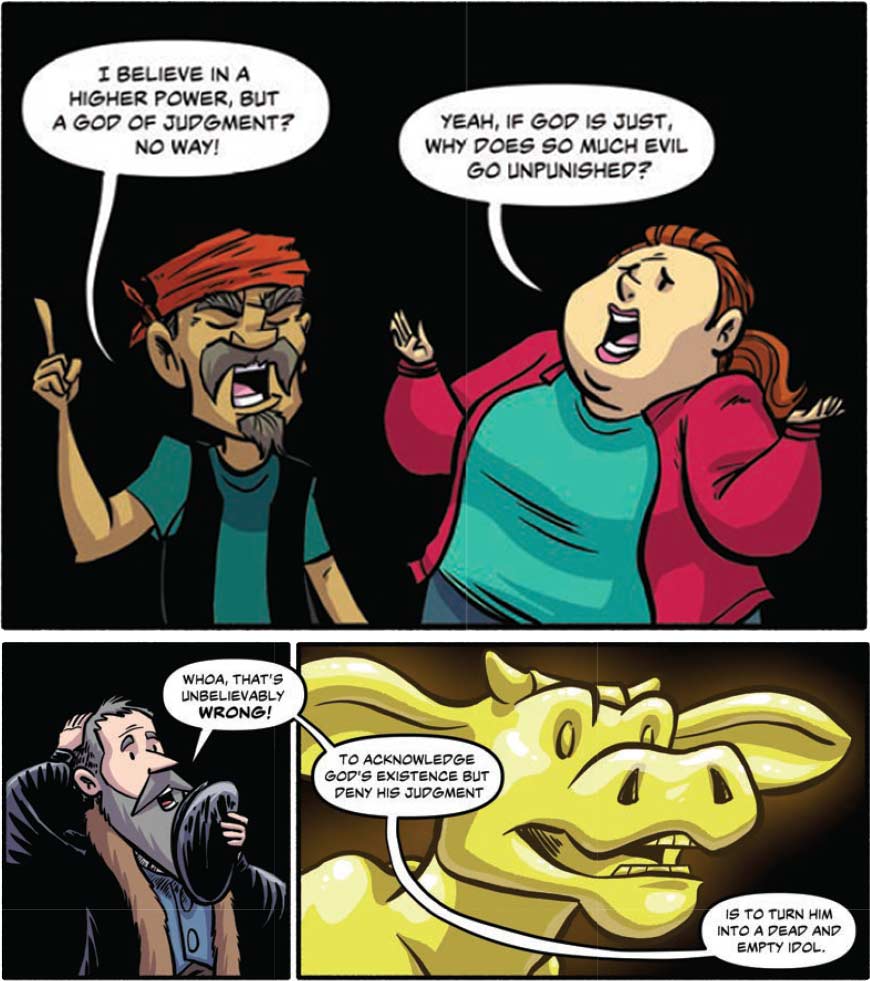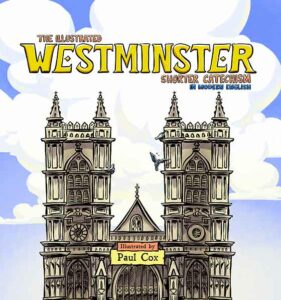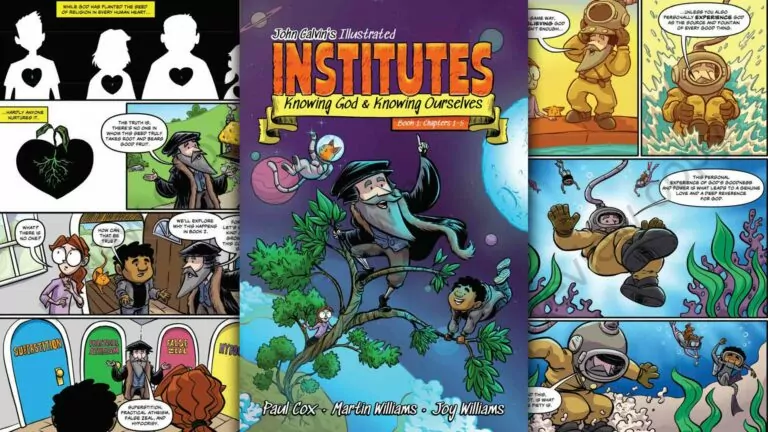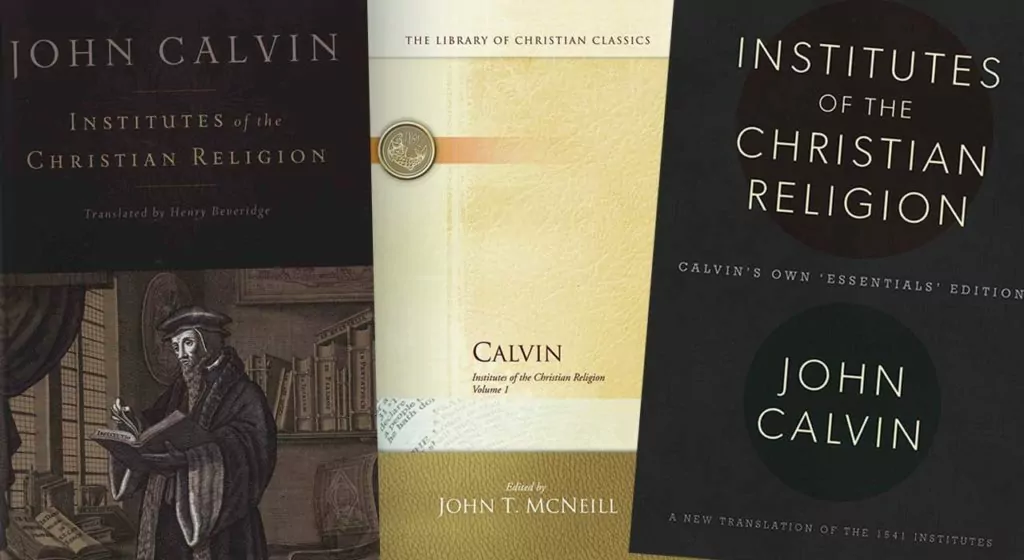Book 1 – Chapter 1-5
by Martin Williams and Joy Williams
illustrated by Paul Cox
P&R Publishing
2025 / 82 pages
Have you always meant to read Calvin’s Institutes of the Christian Religion and just never gotten off the starting blocks? You’re not alone, and help has arrived! Calvin’s weightiest work has been transformed into a much more accessible, but still substantive, comic book.
Or, rather, a good start has been had.
Husband and wife writers Martin and Joy Williams have teamed up with illustrator Paul Cox, (whose Reftoons comics have been featured in Reformed Perspective) on this ambitious project. In their first book they’ve covered the Institute’s first 5 chapters… which leaves them with 75 more chapters to cover in future editions.
Our guide is John Calvin himself, along with three companions: Theo is a boy, Geneva a girl, and the cute cat tagging along is named Luther. There isn’t a story, exactly. Theo comes across Calvin (and cat Luther) while studying on his computer. And somehow Calvin steps right out of the computer screen and they start talking about the nature of “true knowledge.”
To give you a taste of what’s discussed, here’s Calvin explaining that a true knowledge of God – really knowing God – is more than knowing facts about Him:
“Think about this: Satan knows a lot about God and even trembles (James 2:19)… [but] he doesn’t love God. That’s why fear without love isn’t true piety and love without fear isn’t true piety either. God’s children, however, both fear and love Him at the same time.”
This is a mighty abridgment of what Calvin says in his original, but it does cut to the heart of it. And each of the five chapters ends with 10 questions to aid in reflection, and with an encouragement to read the original to dive even deeper.
A few of the other issues covered include:
- How we can only really understand ourselves when we know God
- How a just God can judge people who have never heard of Him
- Why there are no true atheists but there are so many idols
For another taste, here’s Calvin speaking to practical atheism – folks who “might admit there’s a God, but they strip Him of His majesty by denying His power and providence – like someone trying to block out the sun with their hands as if that could make it disappear. Even worse they outright reject God’s just judgment on the wicked.”

So who is this for? Anyone who’s wanted to study the Institutes – because we all know there is gold about our God to be mined there! – but who is understandably intimidated by the 1700+ page original. This is a way to start. And there is gold even here too. The nuggets are smaller, but Calvin loved our Lord, and that comes out even in this abridged form. These Illustrated Institutes really are for everyone… and for some it is going to be the perfect on-ramp to tackling the much bigger version (and for you, we’ve got recommendations on exactly what version you should get).
 That said, even as this does a fantastic job of simplifying and illustrating deep truths about God, it still isn’t kiddish. The cartoon pictures might give the impression that this is aimed at young teens, and inside of a Bible or catechism class, 12 and up could tackle it. But this is still Calvin – meaty rather than milk – so not a lot of 13-15 year-olds are going to work through this if they aren’t being made to.
That said, even as this does a fantastic job of simplifying and illustrating deep truths about God, it still isn’t kiddish. The cartoon pictures might give the impression that this is aimed at young teens, and inside of a Bible or catechism class, 12 and up could tackle it. But this is still Calvin – meaty rather than milk – so not a lot of 13-15 year-olds are going to work through this if they aren’t being made to.
But an older crowd? Oh yeah. For all of the well-meaning Reformed folk out there who’ve bought a copy of the Institutes but it’s lying on the “to be read much later” pile, this will be such a fun way to learn what all the hype is about. It’s been almost 500 years since Calvin’s first edition of the Institutes was published, and there is a reason it is still being read today. Now we can all find out why!
And if you enjoy this effort, you’ll be interested to know that Paul Cox has also crafted The Illustrated Westminster Shorter Catechism. The illustrations are Cox’s same friendly style, though this is more picture book than comic – there are no characters taking us from one page to the next, and no dialogue – and the Catechism’s original 17th-century English has been lightly modernized. This could be a great tool for a family to work through the Catechism’s 107 Questions and Answers together.












